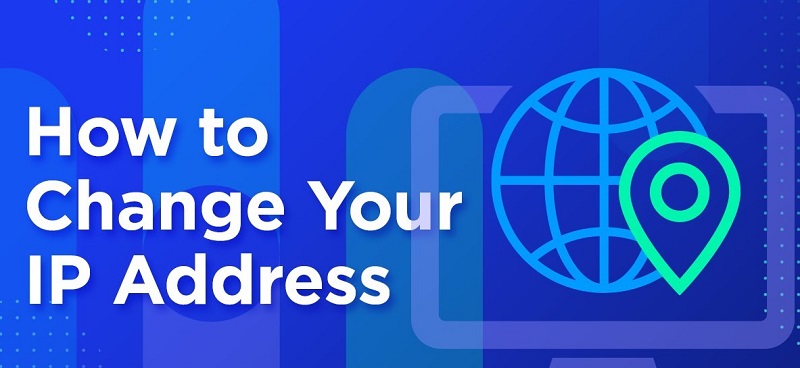
If you want to be connected to the internet you need an IP address. The term “IP” is the abbreviation for “Internet Protocol”, and corresponds to a series of numbers that serve to uniquely identify us on the network.
Basically there are 2 types of IPs: Public IPs and private IPs. Private IPs are used to distinguish each of the different devices that we have connected within our local or home network. On the other hand, public IPs have a different function, and serve to identify our device when we are accessing the Internet.
It should be noted, however, that if we are accessing the Internet through the router that we have installed at home, all the devices connected to the router will show the same public IP. And, when we connect to the network, what is actually shown is the public IP address of the router, regardless of whether we are connected via Wi-Fi with the tablet in the living room or by cable from the PC in our room.
How to change the public IP address of a device
Now, what happens if we want to change the IP of our device? The private IP is an internal configuration of our local network, and it is quite easy to modify, although in the case of the public IP the process is a little more complicated.
If we want to change the public IP of our PC (or any other device) we have two options:
- Use a VPN connection to mask the real IP of our device. This will give us a different public IP address, which may even be from another country, and give us access to content that is geolocated or blocked by our internet provider. You can see a list of the best free VPNs here, although generally, the ones that provide the best service are the paid VPNs.
- Reset our router. The person in charge of assigning the public IP of the router is our Internet provider (Telefónica, Vodafone, etc.). Normally the public IP usually has a static value, although sometimes we can change that IP simply by resetting the router or leaving it off for a few hours (preferably at night). Once the router is restarted, our provider or ISP will assign us a new public IP.
Important! Many service providers do not allow you to renew the IP by resetting the router, and it is necessary to contact them by phone to manually request an IP change.
In the case of mobile phones, the situation would be somewhat similar, with it being necessary to contact the provider to modify the IP of our data SIM. Note: You can also leave your phone completely off for a few hours and see if the IP has been automatically renewed when you restart the device.
How to modify the private IP of a device
If what we want is to change the private IP of the PC or any other device that we have connected to our local home network, the process is much simpler and we can do it without having to call the internet provider.
Windows
First of all, press the Win+R key combination and execute the command “ cmd.exe ”. This will open a terminal window. Type the command “ ipconfig ” and press enter. Here you will see several pieces of information: write down the IPv4 address, as well as the subnet mask and default gateway. In a moment we will need to make use of this data.
- Press the Win+R keys and run the command “ control.exe ” to open the Windows Control Panel.
- Select “ View network status and tasks ” from the “Network and Internet” menu.
- In the menu on the left, click on “ Change adapter settings ”.
- Right-click on your PC’s main internet connection, whether Ethernet or Wi-Fi and go to “Properties”.
- Now just click on “ Internet Protocol version 4 ” and click on “ Properties ”.
- In this new window, activate the “Use the following IP address” box:
- IP Address: Enter the same IPv4 address that you wrote down a moment ago, but change the last number. You can use any value between 0 and 255. However, try not to use any IP that is already taken by another device to avoid duplication.
- Subnet Mask: Enter the same subnet mask that you noted above.
- Default Gateway: This indicates the same gateway that you noted a moment ago in the terminal window.
- Finally, enter the IP address of the default gateway in the “Preferred DNS Server” field.
- Activate the “Validate settings on exit” checkbox.
- Click on “OK” to save the changes and “Close” in the next window.
Now Windows will make the IP change and if it detects any problem it will show it to us on the screen. To see if everything went well, simply open a new terminal window and run the ipconfig command or open a browser window and check your internet connection.
macOS
As for Apple computers, the process is much more direct.
- Click on the Apple logo in the upper left corner of the screen and select “System Preferences”.
- Click on “ Network ” and in the new window choose your connection, whether Ethernet or Wi-Fi.
- You should now see your IP address in the upper right area of the screen.
- Click on the “ Advanced ” button and select “ TCP/IP ” from the next menu.
- Open the IPv4 configuration dropdown and select manual DHCP.
- This will allow us to enter the new IP address of the computer.
- Apply the changes and try connecting to the internet to check that everything is correct.
Android
If you want to change the private IP of your Android phone, follow these steps:
- Enter the general Android settings.
- Select “Network and Internet”.
- Click on the Wi-Fi network you are connected to.
- In the network details, click on the pencil icon that you will see at the top of the screen to modify the network settings.
- In the advanced options, change the IP settings to “Static IP” and set a new IP address for your Android device.
